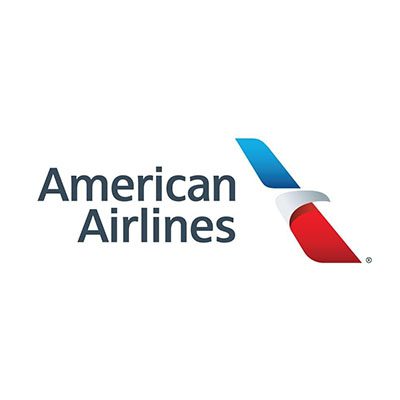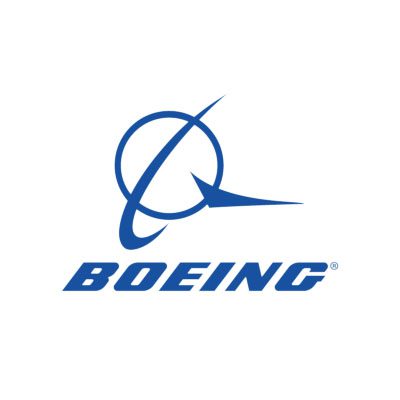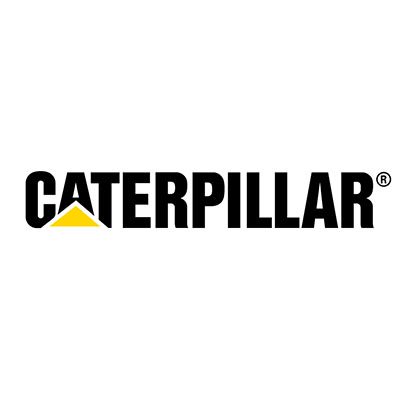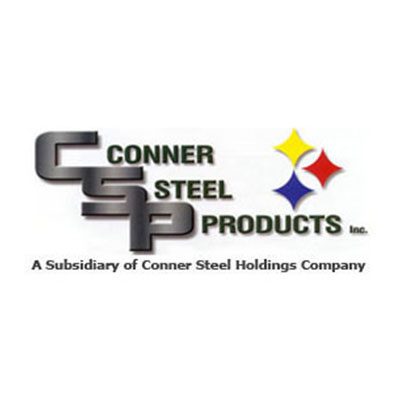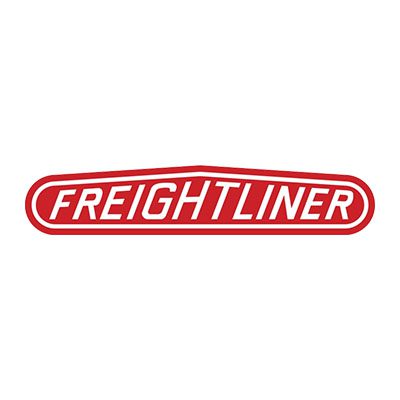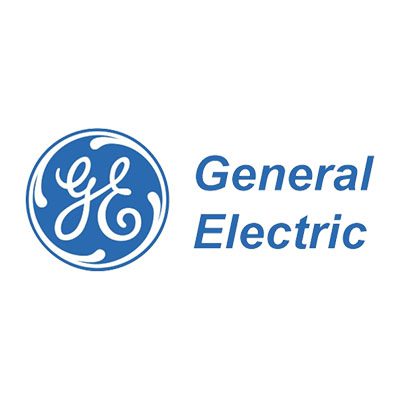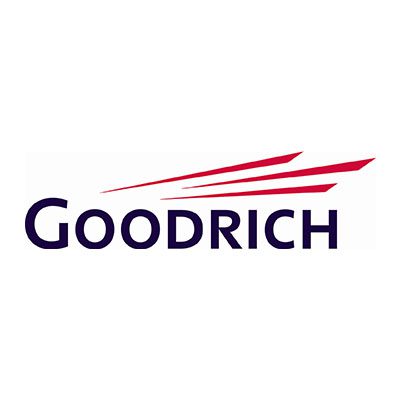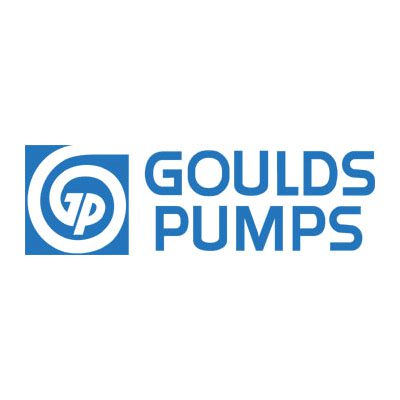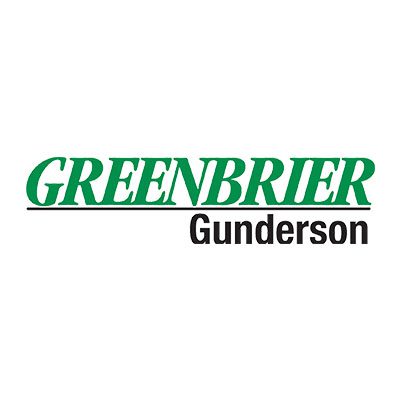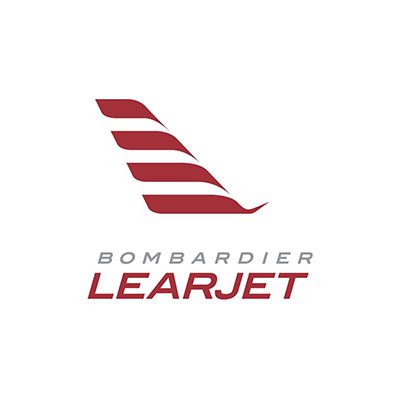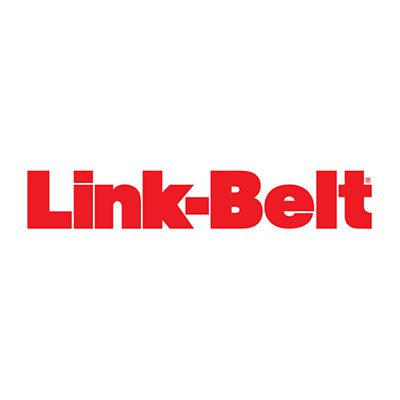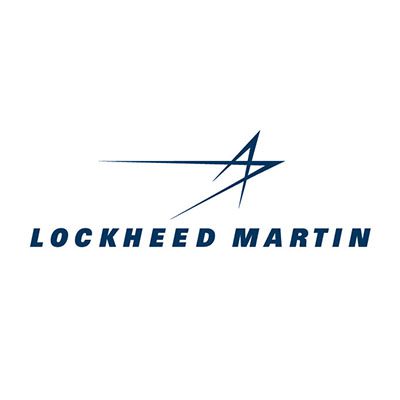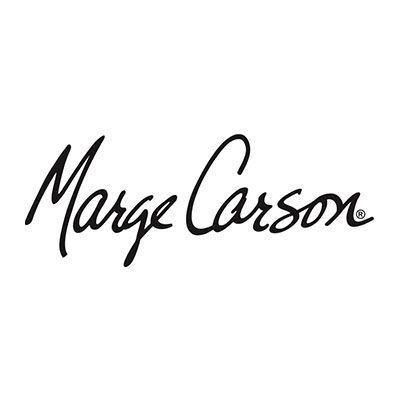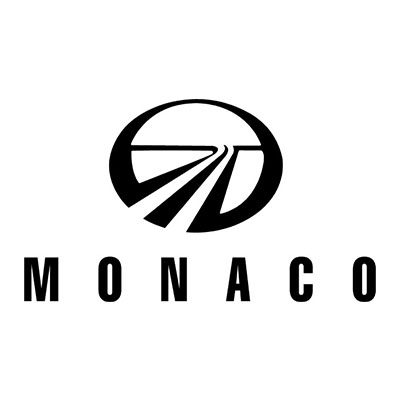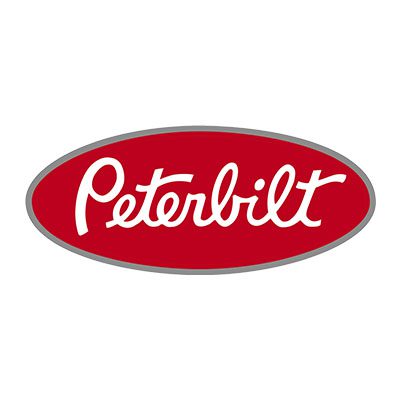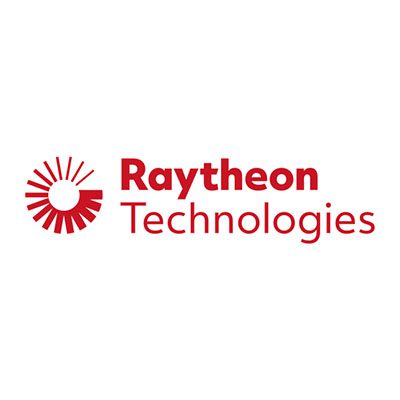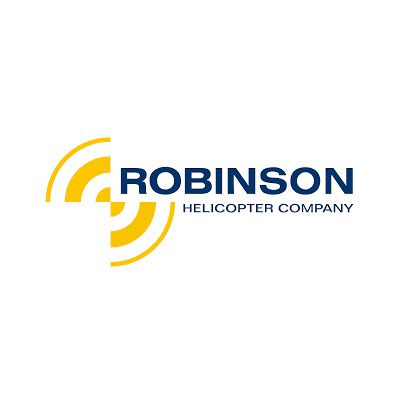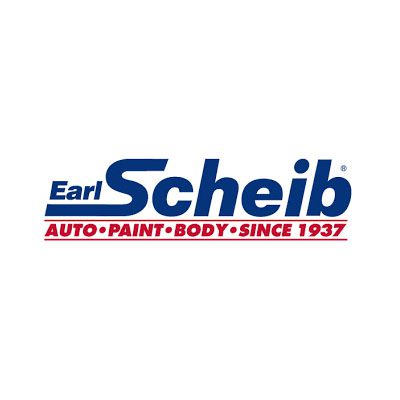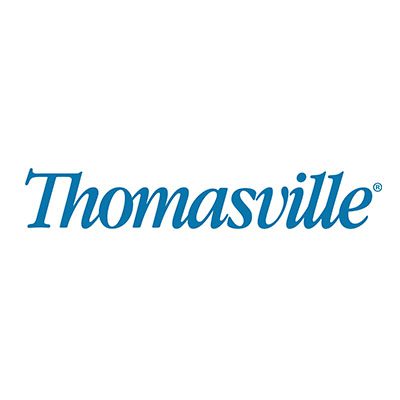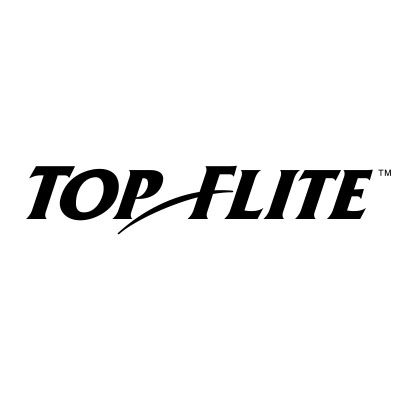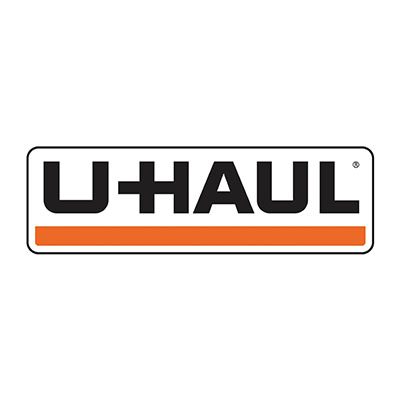NFPA 33
NFPA 33 Website Section/NFPA-Approved (9/11/18)
Quick Look at the Essentials of NFPA 33 (Standard for Spray Application Using Flammable of Combustible Materials)
(Figures and Sections reproduced with permission from NFPA 33-2018, Standard for Spray Application Using Flammable of Combustible Materials, Copyright © 2017, National Fire Protection Association, Quincy, MA 02169. This reprinted material is not the complete and official position of the NFPA on the referenced subject, which is represented only by the standard in its entirety which can be obtained through the NFPA web site at www.nfpa.org)
Complying with all standards and codes in each aspect of design
We at Spray Systems understand that the design and implementation of your spray booth can be an extremely challenging and confusing process. It is our goal to provide you with important information to help that process go as smoothly as possible. Although designing the perfect spray booth is very important, designing the booth AND complying with all the federal and local safety codes are the most important steps in ensuring the long and continued success, productivity and efficiency of your spray application. We believe that keeping all these codes in mind during the design phase is the only way to prevent any complications down the road.
For this reason, we have provided a summary of important safety code sections of NFPA 33, so that you can better understand the regulatory impact of designing the perfect spray booth for you. The liability to your business for violation can be far-reaching.The Fabricator can’t be too cavalier about these codes and standards.
Too often, any code or standard violation can bring on lawsuits, whether they’re initiated by agencies or employees, especially where workers compensation claims get involved. These can be avoided if the booth designer understands and appreciates how these codes can be satisfied while protecting your design solution – preventing is certainly less expensive than curing a code violation. Plant and property safety is governed by national and local Fire Department regulations. Finisher’s need to protect product inventory and the cost to replace, and equipment downtime due to damage, or citations issued by regulatory agencies.
Here are (5) key chapters from NFPA that you should know as they pertain to spray booth design and installation and are further discussed below…
Chapter 5: Construction and Design of Spray Areas, Spray Rooms, and Spray Booths
Chapter 6: Electrical and Other Sources of Ignition
Chapter 7: Ventilation
Chapter 8: Storage, Handling, and Distribution of Flammable and Combustible Liquids
Chapter 13: Spray Booths and Rooms Used for Drying at Elevated Temperatures
Chapter 15: Powder Coating
Chapter 5: Construction and Design of Spray Areas, Spray Rooms, and Spray Booths
Chapter 5 of the NFPA 33 document covers the basics of design and construction requirements of a spray paint operation. This section outlines the materials that are permitted in the construction of a spray booth with specific examples and exemptions given the location and purpose of a spray booth component. In addition to spray booth construction requirements, this section also provides guidelines for spray booth location in relation to other working operations in the same building. These requirements are paramount for the safe operation of a spray booth as well as for the ease of maintenance and filter replacement. Finally, this section covers the allowable construction materials for illumination, observation panels, and ventilation systems.
Here are some important examples about booth construction and separation you should know:
- Section 5.1.1: Walls, doors, and ceilings that intersect or enclose a spray area shall be constructed of noncombustible or limited combustible materials or assemblies and shall be securely and rigidly mounted or fastened. The interior surfaces of the spray area shall be smooth, designed and installed to prevent pockets that can trap residues, and designed to facilitate ventilation and cleaning.
- Section 5.5:Separation from Other Operations. Spray booths shall be separated from other operations by a minimum distance of 915 mm (3 ft) or by a partition, wall, or floor/ceiling assembly having a minimum fire resistance rating of 1 hour; multiple connected spray booths shall not be considered as “other operations” except as provided for in Section 13.3.
The following are other sections in Chapter Five that address the Construction and Design of Spray Areas and Spray Booths.
- Outlines materials allowed/not allowed in spray booth construction.
- Provides specific exemptions.
- Requirements for conveyor openings.
- Requirements for booths using nitrocellulose.
- Required distances between spray operations.
- Clear areas around spray booths and other operations.
- Outlines requirements for glass covering lighting and observation windows.
- General filter requirements.
- Restrictions on filters being used for multiple materials that are highly combustible.
Chapter 6: Electrical and Other Sources of Ignition
Chapter 6 of NFPA 33 lists the requirements and restrictions for electrical wiring and spark-producing materials that are allowed within a spray paint booth area. The first section defines the applicable zoning system as well as class/division determination. This section is very important in spray booth electrical design as it provides an in-depth description of electrical area classification. Similar to Chapter 5, this chapter covers restrictions on the electrical equipment that is permitted to be within certain areas surrounding a spray booth. Figures (or sketches) are provided that show specific areas where electrical equipment can/cannot be located.
Here are examples of some important electrical requirements you should know:
- 6.2.5: Open flames, spark-producing equipment or processes, and equipment whose exposed surfaces exceed the autoignition temperature of the material being sprayed shall not be located in a spray area or in any surrounding area that is classified as Division 2, Zone 2, or Zone 22.
- 6.2.6: Any utilization equipment or apparatus that is capable of producing sparks or particles of hot metal and that is located above or adjacent to either the spray area or the surrounding Division 2, Zone 2, or Zone 22 areas shall be of the totally enclosed type or shall be constructed to prevent the escape of sparks or particles of hot metal.
- 6.5.2: Electrical area classification NFPA-33, confirms that if spray application operations are conducted within a closed-top, open-face or open-front booth or room, as shown in Figure 6.5.2, any electrical wiring or utilization equipment located outside the booth or room but within 915mm (3 ft) of any opening shall be suitable for Class I, Division 2; Class I, Zone 2; Class II, Division 2; or Zone 22 locations, whichever is applicable.
- 6.6.1: Luminaires, like that shown in Figure 6.6.1, that are attached to the walls or ceiling of a spray area but that are outside any classified area and are separated from the spray area by glass panels that meet the requirements of Section 5.6 shall be suitable for use in unclassified locations. Such fixtures shall be serviced from outside the spray area.
Also covered in this chapter is the requirement to ground all electrically conductive objects in a spray area.
- Zoning system is described and restrictions on class/division location are provided.
- Restrictions on spark producing equipment and/or processes.
- In depth description of electrical area classification.
- Electrical wiring and equipment allowed/not allowed within a spray booth setting.
- Electrical wiring and equipment allowed/not allowed in areas adjacent to a spray booth setting.
- Drawings provided to show areas within/adjacent to a spray booth where electrical restrictions apply.
- Guidelines for luminaires located within a spray booth.
- Guidelines for grounding all electrically conductive objects in a spray area.
Chapter 7 of NFPA 33 outlines the most important requirements of spray booth ventilation. The three main topics covered in this section are powder coating systems, make-up air, and recirculated air. For each of these, the minimum performance requirements are listed as well as general information on when each of these is required in spray booth design. The routing requirements of all exhaust ducts are another important section of this code. Penetrations and discharge restrictions are discussed and exact measurements are provided for reference. Exhaust duct support is another important code listed in this section. The code outlines the structural requirements of any component that is meant to hold exhaust duct in place. These requirements are meant to ensure that the duct is securely fastened to the building and need to be able to support any fire protection systems that are added. The final section of this code outlines the allowable construction materials of exhaust fans and drives as well as restrictions on where exhaust fan components can be located within a spraying operation.
Here are examples of some important ventilation requirements you should know:
- 7.2.3 Mechanical Ventilation. Mechanical ventilationshall be kept in operation at all times while spray operations are being conducted and for a sufficient time thereafter to allow the vapors from drying coated objects or material and residues to be exhausted. Where spray operations are conducted automatically without an attendant constantly on duty, the operating controls of the spray apparatus shall be arranged so that the spray apparatus cannot function unless the exhaust fans are operating.
- 7.5 Recirculation of Exhaust. Air exhausted from spray areas shall not be recirculated unless all of the following requirements are met…
(1) Recirculation particulate filters as defined in this standard shall be used to remove particulates from the recirculated air.
(2) The concentration of vapors in the exhaust airstream shall not exceed 25 percent of the lower flammable limit.
(3) Listed equipment shall be used to monitor the concentration of vapors in all exhaust airstreams.
(4) The equipment specified in 7.5(3) shall initiate a local alarm and shall automatically shut down the spray operation if the concentration of any vapor in the exhaust airstream exceeds 25 percent of the lower flammable limit.
(5) All equipment installed to process and remove contaminants from the air exhausted from spray operations shall be approved by the authority having jurisdiction.
(6) For occupied spray areas where a portion of the exhaust air is recirculated within the spray area, toxicity and worker exposures shall be addressed.
Other Performance requirements under NFPA Chapter 7 you can research are…
- Powder coating systems
- Make-up air systems
- Exhaust ducts
- Exhaust recirculation
- Heating of recirculated air
- Allowable materials of construction given the spray booth application.
- Requirements of exhaust duct support structure.
- Restrictions for construction and location of exhaust fans and drives.
- Ventilation requirements of drying rooms and enclosures.
Chapter 8: Storage, Handling, and Distribution of Flammable and Combustible Liquids
Chapter 8 of NFPA 33 is very important if the medium that is being sprayed within a spray booth is flammable or combustible. This chapter is meant to ensure the safety of all personnel during the storage, mixing, and distribution phases of spraying. The general requirements for mixing paints and ventilation within a mix room are outlined. It is very important to be familiar with this code as it explains the restrictions on the amount of liquid that is permitted per day given certain circumstances. Diagrams have been provided to demonstrate the relationship between the proximity of a mix room to a paint booth and the amount of liquid that can be used during a 1-day period. Finally, this chapter covers the general rules for paint distribution and piping mechanisms. This section of NFPA 33 references other parts of the NFPA code and it is important to be familiar with all applicable codes in order to ensure a successful spraying operation.
Here are examples of some important paint storage requirements you should know:
- 8.3.2 Where the quantities of liquids required or the floor area necessary to provide a suitable mixing room exceeds the limits specified in 8.3.3 through 8.3.6, the mixing room shall meet all applicable requirements of NFPA 30.
- 8.3.3 Mixing rooms shall meet all of the following requirements
(1) Mixing rooms shall meet the construction requirement of Section 5.1.
(2) The area of a mixing room shall not exceed 14 m (150 ft2).
(3) If more than one mixing room is installed, the total quantity of liquids shall not exceed the limits in 8.3.5 or 8.3.6.
(4) Mixing rooms shall be designed to contain a spill of the contents in the room.
(5) Mixing rooms where dispensing, handling, or transferring of Class I, Class II, or Class III liquids at temperatures at or above their flash point occurs shall be provided with mechanical ventilation capable of providing air movement not less than 0.3 m3/min/m2 (1 ft3/min/ft2) of floor area or 4 m3/min (150 ft3/min), whichever is greater.
- 8.3.5 Where a separate mixing room is provided and the mixing room is located adjacent to or within 1830 mm (6 ft) of an adjacent spray area or areas, as shown in Figure 8.3.5(a) and Figure 8.3.5(b), the combined quantities of liquids located in the spray areas and the mixing room shall not exceed 454 L (120 gal).
- 8.3.6 Where a separate mixing room is provided, and the mixing room is located more than 1830 mm (6 ft) from an adjacent spray area or areas, the quantity of liquid permitted in the mixing room shall not exceed 80 L/m2 (2 gal/ft2), up to a maximum of 1135 L (300 gal), as shown in Figure 8.3.6. The amount of liquid in the spray area shall not exceed 227 L (60 gal).
Other Performance requirements under NFPA Chapter 8 you can research are…
- Guidelines for mixing room distribution systems.
- Piping
- General
- Maximum allowable quantities of flammable and combustible liquids allowed to be stored in each control area.
- Table provided
- Guidelines for mixing or transferring liquids.
Chapter 13: Spray Booths and Rooms Used for Drying at Elevated Temperatures
Chapter 13 of NFPA 33 is all about the use of heating systems for the purpose of paint drying and curing. This is one of the most important sections to be familiar with if your spray applications involve drying at elevated temperatures. The first part of this code outlines safety requirements and fail-safes that need to be present whenever heating elements are used. There are specific requirements for flash-off areas that are present in a spraying application. This section mentions several other NFPA codes that also need to be referenced when dealing with flash-off areas. The final sections of NFPA 33 cover interconnecting doors and high temperature limit switches that automatically shut off the drying apparatus at a specified temperature. This code also references specific warning signs that need to be in place to indicate when a drying process is taking place and that can restrict access when high temperatures are involved.
Here are examples of some important drying or curing requirements you should know:
- 13.2 Spray Booths and Spray Rooms Used for Ambient Air Drying. If a spray booth or spray room is also used for air-drying, curing, or fusing operations and the air temperature therein is not elevated above ambient conditions, the ventilation system shall maintain the concentration of any vapors in the exhaust stream below 25 percent of the lower flammable limit. If the temperature in the spray area is elevated for the purpose of accelerating the drying or curing process, then the requirements of Section 13.3 shall apply.
- 13.3* Spray Booths and Spray Rooms Used for Drying at Elevated Temperatures.
- 13.3.1 Spray booths or spray rooms used for batch-type spray application operations, including automobile refinishing operations, shall be permitted to be used alternately for drying, curing, or fusing operations, provided they meet all applicable requirements of this standard and the requirements of NFPA 86 as well as the requirements of 13.3.1.1 through 13.3.1.8.
Other Performance requirements under NFPA Chapter 13 you can research are…
- Guidelines for ambient air drying.
- Guidelines for spray booths and rooms used for drying at elevated temperatures.
- Requirements for Flash-Off Areas.
- Requirements for spray operations connected to or adjacent to drying, curing, or fusing operations.
- Fusion apparatus ventilation guidelines.
- Requirements for drying, curing, and fusion warning signs.
Chapter 15 of NFPA 33 covers the general requirements for powder coating applications. Diagrams have been provided to that show the restrictions on where powder coating booths can be located in relation to other spraying applications and general working operations. Powder coating applications require specific safety protections systems. These are introduced in this section with references to other codes that give more specific instruction on these requirements. For powder coating booths that include automation, this section covers the requirements for emergency shutdown protocols, ventilation systems, automatic sprinkler systems, and the need for portable fire extinguishers. Electrical wiring, dust collection, and explosion protection requirements are covered. In addition to operation guidelines, this section also elaborates on paint booth maintenance. This includes, powder unloading, bag dumping stations, and spill cleanup.
Here are examples of some important powder coating ventilation requirements you should know:
- 15.6 Enclosures. Powder shall be confined by conducting coating operations within one of the following:
(1) A completely enclosed, ventilated room of noncombustible or limited-combustible construction with smooth surfaces designed to prevent accumulation of powder and to facilitate cleaning
(2) A ventilated spray booth meeting the requirements of Section 5.1 through Section 5.7, and having enclosed, ventilated containers (tanks, bins, etc.)
- 15.8.2 Air Exhausted. Air exhausted from the recovery system of a powder operation shall not be recirculated unless the concentration of particulate matter in the exhaust air has been reduced to a level that is considered safe for personnel occupational exposure and equipment continuously monitors the filtration system to signal the operator and to automatically shut down the operation in the event the filtration system fails to maintain the air in this condition. You should know that you can recirculate your powder booth back into the plant, which makes powder applications so efficient – no make-up air.
Other Performance requirements under NFPA 33 Chapter 15 you can research are…
- Restrictions on powder coating booth locations.
- General safety and protection requirements.
- Description of required safety protection systems.
- Guidelines for automated spray operation.
- Emergency shutdown
- Ventilation systems
- Automatic sprinkler systems
- Need for portable fire extinguishers
- Protection guidelines for automated powder application equipment.
- Guidelines for electrical wiring and other sources of ignition within a powder coating enclosure.
- Guidelines for ventilation, dust collection, and explosion protection.
- Operation and maintenance requirements.
- Automated/handheld electrostatic powder spraying equipment.
- Hot flocking
- Fluid bed coating
- Requirements for powder coating delivery and circulation.
- Requirements for powder unloading, bag dumping stations, and pneumatic conveying systems.
- Storage and handling guidelines.
- Housekeeping guidelines.
- Spill clean up
Here are some other NFPA codes and standards that apply to spray booths. Please refer to the complete edition for specific standards as they apply to your booth design…
- NFPA 68 Standard on Explosion Protection by Deflagration Venting. This standard applies to the design, location, installation, maintenance, and use of devices and systems that vent the combustion gases and pressures resulting from a deflagration within an enclosure so that structural and mechanical damage is minimized.
- NFPA 70®:National Electrical Code®. Broadly covers the workplace in this 800+ page code. Safety requirements for Special Equipment can be found in Chapter 3. NFPA-70 also outlines a documented system of electrical safety principles and procedures that directs activities for the risk associated with electrical hazards. Article 105 address the application of safety-related work practices and procedures and Article 120 addresses establishing an electrically safe work condition.
- NFPA 86: Standards for Ovens and Furnaces. This standard shall apply to Class A, Class B, Class C, and Class D ovens, dryers, and furnaces; thermal oxidizers; and any other heated enclosure used for processing of materials and related equipment…Class A ovens and furnaces (specifically for spray booths) are heat utilization equipment operating at approximately atmospheric pressure, wherein there is a potential explosion or fire hazard that could be occasioned by the presence of flammable volatiles or combustible materials processed or heated in the furnace. Such flammable volatiles or combustible materials can originate from any of the following…paints, powders, inks, and adhesives from finishing processes, such as dipped, coated, sprayed, and impregnated materials.
- Note: NFPA 70® and National Electrical Code® are registered trademarks of the National Fire Protection Association, Quincy, MA
Chapter 5 Construction and Design of Spray Areas, Spray Rooms, and Spray Booths
5.1* Spray Areas.
5.1.1Walls, doors, and ceilings that intersect or enclose a spray area shall be constructed of noncombustible or limitedcombustible materials or assemblies and shall be securely and rigidly mounted or fastened. The interior surfaces of the spray area shall be smooth, designed and installed to prevent pockets that can trap residues, and designed to facilitate ventilation and cleaning.
N 5.1.1.1 The interior surfaces of the spray area shall be smooth, designed and installed to prevent pockets that can trap residues, and designed to facilitate ventilation and cleaning.
N 5.1.1.2 Air intake filters that are a part of a wall or ceiling assembly shall be listed in accordance with ANSI/UL 900, Standard for Air Filter Units.
5.1.2 The floor of the spray area shall be constructed of noncombustible material, limited-combustible material, or combustible material that is completely covered by noncombustible material.
5.1.3 Aluminum shall not be used for structural support members, walls, or ceilings that enclose a spray area or for ventilation ductwork to or from an enclosed spray area unless otherwise permitted by 5.1.3.1.
N 5.1.3.1 Aluminum shall be permitted to be used for interior components, such as platforms, spray apparatus components, and other ancillary devices.
Δ 5.1.4 Enclosed spray areas shall be provided with means of egress that meet the applicable requirements of Chapter 40 of NFPA 101.
5.2 Spray Rooms. In addition to the requirements of Section 5.1, spray rooms shall be constructed of and separated vertically and horizontally from all surrounding areas by construction assemblies that have a fire resistance rating of not less than 2 hours.
N 5.3 Spray Booths.
N 5.3.1 Spray booths shall meet the requirements of Sections 5.1 and 5.3.
N 5.3.2 If walls or ceiling assemblies are constructed of sheet metal, single-skin assemblies shall be no thinner than 1.2 mm (0.0478 in.), and each sheet of double-skin assemblies shall be no thinner than 0.9 mm (0.0359 in.).
N 5.3.3 Structural sections of spray booths shall be permitted to be sealed with a caulk or sealant to minimize air leakage.
N 5.3.4 Spray booths that are used exclusively for powder coating shall meet the requirements of Chapter 15 and shall be permitted to be constructed of fire-retardant combustible materials where approved by the authority having jurisdiction.
N 5.3.4.1 Listed spray booth assemblies that are constructed of other materials shall be permitted.
N 5.3.5 Spray application operations and processes that involve the use of finishing materials containing nitrocellulose shall be confined to water-wash spray booths as defined in this standard unless otherwise specified in 5.3.5.1.
N 5.3.5.1 Spray application of finishing materials containing nitrocellulose shall be permitted in a dry-type spray booth provided that residue is removed from all baffle plates at least daily and all filters are changed at least daily.
5.4 Conveyor Openings. Conveyor openings that are necessary for transporting or moving work into and out of the spray area shall be as small as practical.
5.5* Separation from Other Operations. Spray booths shall be separated from other operations by a minimum distance of 915 mm (3 ft) or by a partition, wall, or floor/ceiling assembly having a minimum fire resistance rating of 1 hour; multiple connected spray booths shall not be considered as “other operations” except as provided for in Section 13.3.
5.5.1 Spray booths shall be installed so that all parts of the booth are readily accessible for cleaning.
5.5.2 A clear space of not less than 915 mm (3 ft) shall be maintained on all sides and above the spray booth, and shall be kept free of any storage or combustible construction.
5.5.2.1 The requirement in 5.5.2 shall not prohibit locating a spray booth closer than 915 mm (3 ft) to or directly against an interior partition, wall, or floor/ceiling assembly that has a fire resistance rating of not less than 1 hour, provided the spray booth can be maintained and cleaned.
5.5.2.2 The requirement in 5.5.2 shall not prohibit locating a spray booth closer than 915 mm (3 ft) to an exterior wall or aroof assembly, provided the wall or roof is constructed of noncombustible material and provided the spray booth can be maintained and cleaned.
5.6 Illumination and Observation Panels.
5.6.1 Panels for luminaires or observation shall be of heattreated glass, laminated glass, wired glass, or hammered-wired glass and shall be sealed to confine vapors, mists, residues, dusts, and deposits to the spray area.
5.6.1.1 Listed spray booth assemblies that have observation panels constructed of other materials shall be permitted.
5.6.2 Panels for luminaires shall be separated from the fixture to prevent the surface temperature of the panel from exceeding 93°C (200°F).
5.6.3 The panel frame and method of attachment shall be designed to not fail under fire exposure before the observation panel fails.
5.6.4 Observation panels for spray booths that are used exclusively for powder coating processes shall be permitted to be constructed of fire-resistant combustible materials.
Δ 5.7 Ventilation. Spray areas that are equipped with ventilation distribution, baffle plates, or dry overspray collection filters shall meet the requirements of 5.7.1 through 5.7.5.
5.7.1 Distribution plates or baffles shall be constructed of noncombustible materials and shall be readily removable or accessible for cleaning on both sides.
5.7.2 Filters shall not be used when applying materials known to be highly susceptible to spontaneous heating or spontaneous ignition.
5.7.3 Supports and holders for filters shall be constructed of noncombustible materials.
5.7.4 Overspray collection filters shall be readily removable or accessible for cleaning or replacement.
5.7.5 Filters shall not be alternately used for different types of coating materials if the combination of the materials might result in spontaneous heating or ignition. (See also Section 10.9.)
Chapter 6 Electrical and Other Sources of Ignition
6.1 Scope. This chapter shall apply to electrical wiring and electrical utilization equipment that is used in the spray area or in the vicinity of the spray area. This chapter shall also apply to other sources of ignition.
6.2* General.
6.2.1 Electrical wiring and utilization equipment shall meet all applicable requirements of Articles 500, 501, 502, 505, and 516 of NFPA 70 and all applicable requirements of this chapter.
N 6.2.1.1 Powered vehicles shall meet the requirements of Section 6.10.
N 6.2.1.2 Resin application operations shall meet the requirements of Chapter 17.
6.2.2* For the purposes of this standard, the Zone system of electrical area classification shall be applied as follows:
(1) The inside of open or closed containers or vessels shall be considered a Class I, Zone 0 location.
(2) A Class I, Division 1 location shall be permitted to be alternatively classified as a Class I, Zone 1 location.
(3) A Class I, Division 2 location shall be permitted to be alternatively classified as a Class I, Zone 2 location.
(4) A Class II, Division 1 location shall be permitted to be alternatively classified as a Zone 21 location.
(5) A Class II, Division 2 location shall be permitted to be alternatively classified as a Zone 22 location.
6.2.3 For the purposes of electrical area classification, the Division system and the Zone system shall not be intermixed for any given source of release.
6.2.4 In instances of areas within the same facility classified separately, Class I, Zone 2 locations shall be permitted to abut, but not overlap, Class I, Division 2 locations. Class I, Zone 0 or Zone 1 locations shall not abut Class I, Division 1 or Division 2 locations. [70:505.7(B)]
6.2.5* Open flames, spark-producing equipment or processes, and equipment whose exposed surfaces exceed the autoignition temperature of the material being sprayed shall not be located in a spray area or in any surrounding area that is classified as Division 2, Zone 2, or Zone 22.
6.2.5.1 This requirement shall not apply to drying, curing, or fusing apparatus covered by Chapter 13.
6.2.6* Any utilization equipment or apparatus that is capable of producing sparks or particles of hot metal and that is located above or adjacent to either the spray area or the surrounding Division 2, Zone 2, or Zone 22 areas shall be of the totally enclosed type or shall be constructed to prevent the escape of sparks or particles of hot metal.
6.3 Electrical Area Classification.
6.3.1* Class I Locations. A Class I location shall be any location where a flammable gas or vapor is present or might be present in the air in quantities sufficient to produce an explosive or ignitible mixture.
6.3.1.1* Class I, Division 1 Locations. As defined in 500.5(B) (1) of NFPA 70, a Class I, Division 1 location shall be any location where one of the following conditions exists:
(1) An ignitible concentration of flammable gas or vapor can exist under normal operating conditions.
(2) An ignitible concentration of flammable gas or vapor can exist frequently because of repair or maintenance operations or because of leakage.
(3) Breakdown or faulty operation of equipment or processes might release an ignitible concentration of flammable gas or vapor and might also cause simultaneous failure of electrical equipment in such a way as to directly cause the electrical equipment to become a source of ignition.
6.3.1.2* Class I, Division 2 Locations. As defined in 500.5(B) (2) of NFPA 70, a Class I, Division 2 location shall be any location where one of the following conditions exists:
(1) A flammable gas or a volatile flammable liquid is handled, processed, or used, but any flammable gas, vapor, or liquid is confined within a closed container or a closed system from which it can escape only in case of accidental rupture or breakdown of the container or
(2) An ignitible concentration of flammable gas or vapor is normally prevented by positive mechanical ventilation but might exist because of failure or abnormal operation of the ventilating equipment.
(3) An ignitible concentration of flammable gas or vapor might occasionally be transmitted from an adjacent Class I, Division 1 location, unless such transmission is prevented by positive pressure ventilation from a source of clean air and effective safeguards against ventilation failure are provided.
6.3.1.3* Class I, Zone 0 Locations. As defined in 505.5(B)(1) of NFPA 70, a Class I, Zone 0 location shall be any location where an ignitible concentration of flammable gas or vapor is present either continuously or for long periods of time.
6.3.1.4* Class I, Zone 1 Locations. As defined in 505.5(B)(2) of NFPA 70, a Class I, Zone 1 location shall be any location where one of the following conditions exists:
(1) An ignitible concentration of flammable gas or vapor is likely to exist under normal operating conditions.
(2) An ignitible concentration of flammable gas or vapor might exist frequently because of repair or maintenance operations or because of leakage.
(3) Breakdown or faulty operation of equipment or processes might release an ignitible concentration of flammable gas or vapor and might also cause simultaneous failure of electrical equipment in such a way as to directly cause the electrical equipment to become a source of ignition.
(4) An ignitible concentration of flammable gas or vapor might occasionally be transmitted from an adjacent Class I, Zone 0 location, unless such transmission is prevented by positive pressure ventilation from a source of clean air and effective safeguards against ventilation failure are provided.
6.3.1.5 Class I, Zone 2 Locations. As defined in 505.5(B)(3) of NFPA 70, a Class I, Zone 2 location shall be any location where one of the following conditions exists:
(1) An ignitible concentration of a flammable gas or vapor is not likely to exist under normal operating conditions, and if an ignitible concentration does exist, will exist only for a short period of time.
(2) A flammable gas or a volatile flammable liquid is handled, processed, or used, but any flammable gas, vapor, or liquid is confined within a closed container or a closed system from which it can escape only in case of accidental rupture or breakdown of the container or system or in case of abnormal operation of the equipment.
(3) An ignitible concentration of flammable gas or vapor is normally prevented by positive mechanical ventilation but might exist because of failure or abnormal operation of the ventilating equipment.
(4) An ignitible concentration of flammable gas or vapor might occasionally be transmitted from an adjacent Class I, Zone 1 location, unless such transmission is prevented by positive pressure ventilation from a source of clean air and effective safeguards against ventilation failure are provided. (See also A.6.3.1.2.)
6.3.2 Class II Locations. A Class II location shall be any location that might be hazardous because of the presence of a combustible dust.
6.3.2.1* Class II, Division 1 Locations. As defined in 500.5(C) (1) of NFPA 70, a Class II, Division 1 location shall be any location where one of the following conditions exists:
(1) Combustible dust is in the air in quantities sufficient to produce explosive or ignitible mixtures under normal operating conditions.
(2) Mechanical failure or abnormal operation of machinery or equipment might cause an explosive or ignitible mixture of combustible dust in air and might also provide a source of ignition through simultaneous failure of electrical equipment, operation of protection devices, or from other causes.
(3) Group E combustible dusts might be present in quantities sufficient to be hazardous.
6.3.2.2* Class II, Division 2 Locations. As defined in 500.5(C) (2) of NFPA 70, a Class II, Division 2 location shall be a location in which one of the following conditions exists:
(1) Combustible dust due to abnormal operations might be present in the air in quantities sufficient to produce explosive or ignitible mixtures.
(2) Combustible dust accumulations are present but are normally insufficient to interfere with the normal operation of electrical equipment or other apparatus, but could as a result of infrequent malfunctioning of handling or processing equipment become suspended in the air.
(3) Combustible dust accumulations on, in, or in the vicinity of the electrical equipment could be sufficient to interfere with the safe dissipation of heat from electrical equipment, or could be ignitible by abnormal operation or failure of electrical equipment.
6.3.2.3* Zone 20. As defined in 506.5(B)(1) of NFPA 70, a Zone 20 location shall be any location where one of the following conditions exists:
(1) An ignitible concentration of combustible dust is present continuously.
(2) An ignitible concentration of combustible dust is present for long periods of time.
6.3.2.4* Zone 21. As defined in 506.5(B)(2) of NFPA 70, a Zone 21 location shall be any location where one of the following conditions exists:
(1) An ignitible concentration of combustible dust is likely to exist occasionally under normal operating conditions.
(2) An ignitible concentration of combustible dust might exist frequently because of repair or maintenance operations or because of leakage.
(3) Equipment is operated or processes are carried on of such a nature that equipment breakdown or faulty operations could result in the release of an ignitible concentration of combustible dust and also cause simultaneous failure of electrical equipment in a mode to cause the electrical equipment to become a source of ignition.
(4) An ignitible concentration of combustible dust could communicated from an adjacent Zone 20 location, unless communication is prevented by adequate positive pressure ventilation from a source of clean air and effective safeguards against ventilation failure are provided.
6.3.2.5* Zone 22. As defined in 506.5(B)(3) of NFPA 70, a Zone 22 location shall be any location where one of the following conditions exists:
(1) An ignitible concentration of combustible dust is not likely to occur in normal operation, and if it does occur, will only persist for a short period.
(2) A combustible dust is handled, processed, or used, but the dust is normally confined within closed containers or closed systems from which it can escape only as a result of the abnormal operation of the equipment with which the dust is handled, processed, or used.
(3) An ignitible concentration of combustible dust could be communicated from an adjacent Zone 21 location, unless communication is prevented by adequate positive pressure ventilation from a source of clean air and effective safeguards against ventilation failure are provided.
6.4 Electrical Devices in Spray Areas.
6.4.1 The spray area as defined in 3.3.3.3 shall be Class I, Division 1; Class I, Zone 1; Class II, Division 1; or Zone 21, whichever is applicable.
6.4.2 Electrical wiring and utilization equipment that is located in the spray area and is not subject to deposits of combustible residues shall be suitable for Class I, Division 1; Class I, Zone 1; Class II, Division 1; or Zone 21 locations, whichever is applicable.
6.4.3* Electrical wiring and utilization equipment that is located in the spray area and is subject to deposits of combustible residues shall be listed for such exposure and shall be suitable for Class I, Division 1; Class I, Zone 1; Class II, Division 1; or Zone 21 locations, whichever is applicable.
6.5 Electrical Devices in Areas Adjacent to or Connected to
Spray Areas. Electrical wiring and utilization equipment located in areas adjacent to or connected to the spray area, including but not limited to vestibules and tunnels, shall be classified in accordance with 6.5.1 through 6.5.5.
6.5.1 Electrical wiring and utilization equipment located outside, but within 6100 mm (20 ft) horizontally and 3050 mm (10 ft) vertically, of an unenclosed spray area and not separated from the spray area by partitions extending to the boundaries of the area designated as Division 2, Zone 2; or Zone 22 in Figure 6.5.1 shall be suitable for Class I, Division 2; Class I, Zone 2; Class II, Division 2; or Zone 22 locations, whichever is applicable.
6.5.2If spray application operations are conducted within a closed-top, open-face or open-front booth or room, as shown in Figure 6.5.2(a) or Figure 6.5.2(b), any electrical wiring or utilization equipment located outside the booth or room but within 915 mm (3 ft) of any opening shall be suitable for Class I, Division 2; Class I, Zone 2; Class II, Division 2; or Zone 22 locations, whichever is applicable.
6.5.4 If spray application operations are confined to an enclosed spray booth or room, electrical area classification shall be as follows:
- The area within 915 mm (3 ft) of any opening shall be classified as Class I, Division 2; Class I, Zone 2; Class II, Division 2; or Zone 22 locations, whichever is applicable, as shown in Figure 6.5.4.
(2)* Where automated spray application equipment is used, the area outside the access doors shall be unclassified provided the door interlock prevents the spray application operations when the door is open.
(3) Where exhaust air is recirculated and all requirements of Section 7.5 are met, both of the following shall apply:
(a) The interior of any recirculation path downstream of the recirculation particulate filter up to and including the air supply plenum shall be classified as Class I, Division 2; Class I, Zone 2; Class II, Division 2; or Zone 22 locations, whichever is applicable.
(b) The interior of fresh air supply ducts shall be unclassified.
(4) Where exhaust air is not recirculated, the interior of fresh air supply ducts and fresh air supply plenums shall be unclassified.
6.5.5* Open containers, supply containers, waste containers, spray gun cleaners, and solvent distillation units that contain Class I liquids shall be located in areas ventilated in accordance with applicable requirements of Chapter 7.
6.5.5.1 Electrical area classification shall be as follows:
- The area within 915 mm (3 ft) in all directions from any such container or equipment and extending to the floor or grade level shall be classified as Class I, Division 1 or Class I, Zone 1, whichever is applicable.
(2) The area extending 610 mm (2 ft) beyond the Division 1 or Zone 1 location shall be classified as Class I, Division 2 or Class I, Zone 2, whichever is applicable.
(3) The area extending 1525 mm (5 ft) horizontally beyond the area described in 6.5.5.1(2) up to a height of 460 mm (18 in.) above the floor or grade level shall be classified as Class I, Division 2 or Class I, Zone 2, whichever is applicable.
(4) The area inside any tank or container shall be classified as Class I, Division 1 or Class I, Zone 0, whichever is applicable.
6.5.5.2 Electrical wiring and utilization equipment installed in these areas shall be suitable for the location, as shown in Figure 6.5.5.2.
6.6 Illumination.
6.6.1Luminaires, like that shown in Figure 6.6.1, that are attached to the walls or ceiling of a spray area but that are outside any classified area and are separated from the spray area by glass panels that meet the requirements of Section 5.6 shall be suitable for use in unclassified locations. Such fixtures shall be serviced from outside the spray area.
6.6.2 Luminaires, like that shown in Figure 6.6.1, that are attached to the walls or ceiling of a spray area; that are separated from the spray area by glass panels that meet the requirements of Section 5.6; and that are located within a Class I, Division 2; a Class I, Zone 2; a Class II, Division 2; or a Zone 22 location shall be suitable for such location. Such fixtures shall be serviced from outside the spray area.
6.6.3 Luminaires, like that shown in Figure 6.6.3, that are an integral part of the walls or ceiling of a spray area shall be permitted to be separated from the spray area by glass panels that are an integral part of the fixture. Such fixtures shall be listed for use in Class I, Division 2; Class I, Zone 2; Class II, Division 2; or Zone 22 locations, whichever is applicable, and also shall be listed for accumulations of deposits of combustible residues. Such fixtures shall be permitted to be serviced from inside the spray area.
6.6.4 Luminaires that are located inside the spray area shall meet the requirements of Section 6.4 and Section 6.7.
6.7* Static Electricity. All electrically conductive objects in the spray area, except those objects required by the process to be at high voltage, shall be electrically connected to ground with a resistance of not more than 106 ohms (1 megohm). This requirement shall apply to containers of coating material, wash cans, guards, hose connectors, brackets, and any other electrically conductive objects or devices in the area. This requirement shall also apply to any personnel who enter the spray area.
6.8 Flexible Power Cords. For automated equipment and robotic equipment, flexible power cords shall be permitted to be used in hazardous (classified) locations and shall be permitted to be connected to the fixed part of the electrical circuit, provided they meet all of the following conditions:
(1) They are approved for extra-hard usage.
(2) They are equipped with a grounding conductor that meets the requirements of Section 400.2 of NFPA 70.
(3) They are connected to terminals or conductors in an approved manner.
(4) They are supported by a positive mechanical clamp in such a manner that permits the cord to be readily replaced and prevents strain at the cord connections within the terminal enclosure.
(5) They are provided with explosionproof seals for liquid applications or dusttight seals for powder applications where the cord enters junction boxes, fittings, or enclosures.
(6) They are listed for deposits of combustible residues.
6.9 Portable Electric Luminaires. Portable electric luminaires used in spray areas shall meet the requirements of 6.4.3.
6.10 Movement of Powered Vehicles. Powered vehicles shall be listed for the electrical area classification in which they are used, and unlisted powered vehicles shall not be moved into or out of a spray area or operated in a spray area unless the spray application operation or process is stopped and the ventilation system is maintained in operation.
7.1 General. Ventilating and exhaust systems shall be designed and installed in accordance with the applicable requirements of NFPA 91 except as amended by the requirements of this chapter.
7.2 Performance Requirements. Each spray area shall be provided with mechanical ventilation that is capable of confining and removing vapors and mists to a safe location and is capable of confining and controlling combustible residues, dusts, and deposits. The concentration of the vapors and mists in the exhaust stream of the ventilation system shall not exceed 25 percent of the lower flammable limit. (See Annex B for additionalguidance on determining the lower flammable limit.)
7.2.1* Spray areas equipped with overspray collection filters shall have an effective means to ensure that the performance requirements of Section 7.2 are met.
7.2.2 Powder Coating Systems. Powder coating systems also shall meet the requirements of Section 15.8.
7.2.3 Mechanical ventilation shall be kept in operation at all times while spray operations are being conducted and for a sufficient time thereafter to allow the vapors from drying coated objects or material and residues to be exhausted. Where spray operations are conducted automatically without an attendant constantly on duty, the operating controls of the spray apparatus shall be arranged so that the spray apparatus cannot function unless the exhaust fans are operating.
(2) Exhaust discharge shall be directed away from any air intakes.
(3) Exhaust discharge point shall be at least 1830 mm (6 ft) from any exterior wall or roof.
(4) Exhaust discharge point shall be at least 3048 mm (10 ft) from openings into the building.
(5) Exhaust discharge point shall be at least 3048 mm (10 ft) above adjoining grade.
7.5* Recirculation of Exhaust. Air exhausted from spray areas shall not be recirculated unless all of the following requirements are met:
(1) Recirculation particulate filters as defined in this standard shall be used to remove particulates from the recirculated air.
(2) The concentration of vapors in the exhaust airstream shall not exceed 25 percent of the lower flammable limit.
(3) Listed equipment shall be used to monitor the concentration of vapors in all exhaust airstreams.
(4) The equipment specified in 7.5(3) shall initiate a local alarm and shall automatically shut down the spray operation if the concentration of any vapor in the exhaust airstream exceeds 25 percent of the lower flammable limit.
(5) All equipment installed to process and remove contaminants from the air exhausted from spray operations shall be approved by the authority having jurisdiction.
(6)* For occupied spray areas where a portion of the exhaust air is recirculated within the spray area, toxicity and worker exposures shall be addressed.
7.6 Heating of Recirculated Air. Where recirculated air is heated, the following requirements shall be met:
(1) The air heater shall be located downstream of the recirculation particulate filter and vapor concentration monitor.
(2) The surface temperature of the air heater shall not exceed 93°C (200°F).
7.7* Manifolding of Exhaust Ducts. Individual spray booths shall be separately ducted to the building exterior except as indicated in 7.7.1 or 7.7.2.
7.7.1 Multiple cabinet spray booths whose combined frontal area does not exceed 1.7 m2 (18 ft2) shall be permitted to be manifolded if the sprayed materials used will not react and cause ignition of the residue in the ducts.
7.7.2 Where treatment of exhaust is necessary for air pollution control or for energy conservation, ducts shall be permitted to be manifolded if all of the following conditions are met:
(1) The sprayed materials used will not react and cause ignition of the residue in the ducts.
(2) No finishing materials containing nitrocellulose are used.
(3) An air-cleaning system is provided to reduce the amount of overspray carried into the duct manifold.
(4) Automatic sprinkler protection is provided at the junction of each booth exhaust with the manifold, in addition to the protection required by Chapter 9.
(5) The installation is approved by the authority having jurisdiction.
7.8* Materials of Construction. Exhaust plenums and exhaust ducts and fasteners shall be constructed of steel, except as allowed in 7.8.1, 7.8.2, and 7.8.3.
7.8.1 For spray booths used exclusively for powder coating, ducts shall be permitted to be constructed of fire-retardant combustible materials.
7.8.2 Concrete shall be permitted to be used. The interior surfaces of the concrete exhaust plenum or exhaust duct shall be smooth and sealed to facilitate cleaning.
7.8.3 Other materials of construction shall be permitted to be used in cases where the conveyed materials are not compatible with steel.
7.9* Support of Exhaust Ducts. Exhaust ducts shall be supported to prevent collapse under fire conditions.
7.9.1 Duct supports shall be designed to carry the weight of the duct system itself, plus the anticipated weight of any residues. If sprinkler protection is provided inside the duct system, then the duct supports also shall be designed to carry the anticipated weight of any accumulation of sprinkler discharge.
7.9.2 Hangers and supports shall be fastened to the building or to the structure to minimize vibration and stress on the duct system.
7.9.3 Hangers and supports shall be designed to allow for expansion and contraction.
7.9.4 Exhaust ducts shall not use building walls, floors, ceilings, or roofs as component parts.
7.9.5 The provisions of 7.9.4 shall not disallow the use of concrete exhaust plenums or exhaust ducts where some or all of the plenum or duct is part of the concrete floor.
7.10 Exhaust Duct Access Openings. Exhaust ducts shall be provided with doors, panels, or other means to facilitate inspection, maintenance, cleaning, and access to fire protection devices.
7.11 Exhaust Fans and Drives.
7.11.1 The rotating element of the exhaust fan shall be nonferrous, or the fan shall be constructed so that a shift of the impeller or shaft will not permit two ferrous parts of the fan to rub or strike. Necessary allowances shall be made for ordinary expansion and loading and to prevent contact between moving parts and the duct or fan housing. Fan blades shall be mounted on a shaft that shall maintain alignment even when the blades of the fan are heavily loaded. All bearings shall be of the selflubricating type or shall be provided with accessible lubricating ports.
7.11.2 Electric motors that drive exhaust fans shall not be placed inside any spray area unless they meet the provisions of 6.4.3.
7.11.3 Belts shall not enter any spray area unless the belt and pulley within the spray area are completely enclosed.
7.12* Drying Areas. Freshly sprayed workpieces shall be dried only in spaces that are ventilated to prevent the concentration of vapors from exceeding 25 percent of the lower flammable limit. (See also Chapter 13.)
Chapter 8 Storage, Handling, and Distribution of Flammable
and Combustible Liquids
8.1* General. Storage, handling, and mixing of flammable and combustible liquids shall meet all the applicable requirements of NFPA 30 and of this chapter.
8.2 Storage in Process Areas. The maximum allowable quantities (MAQs) of flammable and combustible liquids in each control area shall not exceed the amounts specified in Table 8.2, with additional quantities allowed in accordance with the requirements established in Section 8.3.
8.3 Mixing.
8.3.1 Dispensing or transfer of liquids from containers and filling of containers, including portable mixing tanks and “pressure pots,” shall be done only in a spray area with the ventilation in operation or in a mixing room.
8.3.2Where the quantities of liquids required or the floor area necessary to provide a suitable mixing room exceeds the limits specified in 8.3.3 through 8.3.6, the mixing room shall meet all applicable requirements of NFPA 30.
8.3.3Mixing rooms shall meet all of the following requirements (1) Mixing rooms shall meet the construction requirement of Section 5.1.
(2) The area of a mixing room shall not exceed 14 m (150 ft2).
(3) If more than one mixing room is installed, the total quantity of liquids shall not exceed the limits in 8.3.5 or 8.3.6.
(4) Mixing rooms shall be designed to contain a spill of the contents in the room.
(5) Mixing rooms where dispensing, handling, or transferring of Class I, Class II, or Class III liquids at temperatures at or above their flash point occurs shall be provided with mechanical ventilation capable of providing air movement not less than 0.3 m3/min/m2 (1 ft3/min/ft2) of floor area or 4 m3/min (150 ft3/min), whichever is greater.
(6) Ventilation systems provided in accordance with 8.3.3(5) shall be in operation during operating hours or whenever vapors are present.
(7) Mixing rooms shall be classified for purposes of electrical area classification in accordance with Chapter 7 of NFPA 30.
(8) Mixing rooms shall be provided with an approved automatic fire protection system that meets all applicable requirements of Chapter 9.
(9) Mixing rooms shall be provided with portable fire extinguishers located in accordance with NFPA 10.
8.3.4 The amount of liquid permitted in a single spray area shall not exceed 227 L (60 gal).
8.3.5Where a separate mixing room is provided and the mixing room is located adjacent to or within 1830 mm (6 ft) of an adjacent spray area or areas, as shown in Figure 8.3.5(a) and Figure 8.3.5(b), the combined quantities of liquids located in the spray areas and the mixing room shall not exceed 454 L (120 gal).
8.3.6Where a separate mixing room is provided and the mixing room is located more than 1830 mm (6 ft) from an adjacent spray area or areas, the quantity of liquid permitted in the mixing room shall not exceed 80 L/m2 (2 gal/ft2), up to a maximum of 1135 L (300 gal), as shown in Figure 8.3.6. The amount of liquid in the spray area shall not exceed 227 L (60 gal).
8.4 Distribution Systems — Piping.
8.4.1* Piping systems that convey flammable or combustible liquids between storage tanks, mixing rooms (paint kitchens), and spray areas shall be of steel or other material having comparable properties of resistance to heat and physical damage. Piping systems shall be properly bonded and grounded.
8.4.2* Piping systems within the spray area shall be of steel or material having comparable heat and physical resistance where possible. Where tubing or hose is used, a shutoff valve shall be provided on the steel pipe at the connection.
8.4.3* Tubing or hose shall be inspected and replaced as necessary. Replacement tubing or hose shall be that recommended by the equipment manufacturer.
8.4.4 Where a pump is used to supply the liquid used in the spray application process, piping, tubing, hose, and other accessories shall be designed to withstand the maximum working pressure of the pump, or means shall be provided to limit the discharge pressure of the pump.
8.4.5 All pressure tubing, hose, and couplings shall be inspected at regular intervals. With the hose extended, the hose and couplings shall be tested using the in-service maximum operating pressure. Any hose showing material deteriorations, signs of leakage, or weakness in its carcass or at the couplings shall be replaced.
8.5 Distribution Systems — General.
8.5.1 Liquids shall be transported by means of closed containers, approved safety cans, or approved portable tanks or shall be transferred by means of a piping system. Open containers shall not be used for moving or storing liquids.
8.5.2* Wherever liquids are transferred from one container to another, both containers shall be effectively bonded and grounded to dissipate static electricity.
8.5.3 Containers that supply spray nozzles shall be of the closed type or shall be provided with metal covers that are kept closed. Containers that do not rest on the floor shall have supports or shall be suspended by wire cables. Containers that supply spray nozzles by gravity flow shall not exceed 38 L0 (10 gal) capacity.
8.5.4 Original shipping containers shall not be subjected to air pressure for supplying spray nozzles.
8.5.5 Containers that are pressurized to supply spray nozzles, air storage tanks, and coolers shall comply with all applicable requirements of the ASME Boiler and Pressure Vessel Code, Section VIII, for construction, tests, and maintenance.
8.5.5.1 Containers that meet the following requirements need not meet the requirements of the ASME Boiler and Pressure VesselCode, Section VIII, for construction, tests, and maintenance:
(1) Pressure containers less than 150 mm (6 in.) in diameter
(2) Pressure containers that operate at less than a gauge pressure of 1.03 kPa (15 psi)
(3) Siphon-type spray cups
8.5.6 If a heater is used to heat the liquid being sprayed, it shall be low-pressure steam, low-pressure hot water, or electric.
8.5.6.1 If electric heaters are used to heat the liquid being sprayed, the electric heater shall be approved and listed for the specific location in which it is used. (See Chapter 6.)
8.5.6.2 Heaters shall not be located in spray booths or other locations subject to the accumulation of deposits of combustible residue.
8.5.7 Agitators, if used, shall be driven by compressed air, water, low-pressure steam, or electricity.
8.5.7.1 If the agitators are powered by an electric motor, the motor shall meet the requirements of Chapter 6.
8.5.8 Methods for cleaning paint circulation systems shall meet the requirements of Chapter 18 of NFPA 30.
8.5.9 Compressed air shall be permitted to be used for cleaning paint delivery hose for individual applicators in a spray booth, provided both of the following requirements are met:
(1) The booth ventilation is operating.
(2) The maximum air pressure does not exceed the maximum working pressure of any component of the piping or hose system.
Chapter 13 Drying, Curing, and Fusion Processes
13.1 General. Drying, curing, or fusing apparatus used in connection with spray application of flammable and combustible materials shall meet all applicable requirements of NFPA 86.
13.2 Spray Booths and Spray Rooms Used for Ambient Air Drying. If a spray booth or spray room is also used for airdrying,curing, or fusing operations and the air temperaturetherein is not elevated above ambient conditions, the ventilationsystem shall maintain the concentration of any vapors inthe exhaust stream below 25 percent of the lower flammablelimit. If the temperature in the spray area is elevated for the purpose of accelerating the drying or curing process, then the requirements of Section 13.3 shall apply.
13.3* Spray Booths and Spray Rooms Used for Drying at Elevated Temperatures.
13.3.1Spray booths or spray rooms used for batch-type spray application operations, including automobile refinishing operations, shall be permitted to be used alternately for drying, curing, or fusing operations, provided they meet all applicable requirements of this standard and the requirements of NFPA 86 as well as the requirements of 13.3.1.1 through 13.3.1.8.
13.3.1.1 The interior surfaces (especially the floor) of the spray area shall be cleaned regularly to minimize the accumulation of deposits of combustible residues.
13.3.1.2 For fully enclosed spray booths and spray rooms, a high temperature limit switch shall be provided to automatically shut off the drying apparatus if the air temperature in the spray area exceeds 93°C (200°F). When industrial air heaters are used to elevate the air temperature for drying or curing in a closed-top, open-front, or open-face spray booth, as described in 6.5.2, a high-limit switch shall be provided to automatically shut off the drying apparatus if the air temperature in the spray booth exceeds the maximum discharge air temperature allowed by the standard under which the heater is listed or 93°C (200°F), whichever is less.
13.3.1.3 Where a spray booth or spray room is used for drying, curing, or fusing operations, the interlocks specified in 13.3.1.3.1 and 13.3.1.3.2 shall be provided.
13.3.1.3.1 Spraying apparatus, drying apparatus, and the ventilating system shall be equipped with interlocks arranged so that the spraying apparatus cannot be operated when drying apparatus is in operation or is energized.
13.3.1.3.2* Where industrial air heaters are used to elevate the air temperature for drying, curing, or fusing operations, means shall be provided to deter entry into the spray booth or spray room during the drying, curing, or fusing operation and interlocks shall be provided to shut down the drying, curing, or fusing operation if entry is made.
13.3.1.4 Radiant drying apparatus that is permanently attached to the walls, ceiling, or partitions of the spray area shall be listed for exposure to flammable or combustible vapors, mists, dusts, residues, or deposits.
13.3.1.5 Radiant drying, curing, or fusion apparatus that is permanently attached to the structure of a spray booth and is movable but is suitable only for use in an Ordinary Hazard (general purpose) location, that is, is not suitable for a hazardous (classified) location as defined in NFPA 70, shall be permitted to be used provided the following conditions apply:
(1) The apparatus can be moved into a pressurized enclosure that meets the requirements for Type X pressurizing, as specified in NFPA 496.
(2) Interlocks are provided both to prevent the use of the spray application equipment unless the drying, curing, or fusion apparatus has been moved into the pressurized enclosure and the enclosure has been purged and pressurized in accordance with NFPA 496 and to prevent the actuation of the drying, curing, or fusion apparatus when it is located in the enclosure.
13.3.1.6 Radiant drying, curing, or fusion apparatus that is permanently attached to the structure of a spray booth and is pendent-mounted or employs the use of a track or similar system but is suitable only for use in an Ordinary Hazard (general purpose) location, that is, is not suitable for a hazardous (classified) location as defined in NFPA 70 shall be permitted to be used, provided that all requirements of 13.3.1.5 have been met.
13.3.1.6.1 In addition, pendent-mounted apparatus shall be arranged to allow the apparatus, its power cord, and its pendent-mount system to be moved into a pressurized enclosure that meets the requirements for Type X pressurizing, as specified in NFPA 496. Track-mounted systems also shall meet the requirements for Type X pressurizing, as specified in NFPA 496.
13.3.1.7 Any containers of flammable or combustible liquids shall be removed from the booth before the drying apparatus is energized.
13.3.1.8 Fuel tanks containing fuel other than gasoline or diesel fuel shall be removed from any vehicle brought into the spray area.
13.3.1.9* Explosion relief shall not be required for a spray booth or spray room that is alternately used for drying, curing, or fusing, if all of the following conditions exist:
(1) The spray booth or spray room is used for batch-type spray application operations only.
- The air heater is not within the recirculated air path.
- The ventilation system complies with the applicable requirements of NFPA 86.
13.4 Flash-Off Areas.
13.4.1 The electrical area classification extending into a flashoff area shall meet the requirements for openings specified in 6.5.4.
13.4.2 Flash-off areas that are heated above ambient temperatures to accelerate release of vapors shall meet the requirements of NFPA 86. If the flash-off area is adjacent to or connected to a spray booth or spray room then the requirements of Section 13.5 shall apply.
13.4.3 Open or enclosed, unheated flash-off areas shall be ventilated in accordance with Section 7.12.
13.4.4 Open flash-off areas shall be protected in accordance with the requirements of the occupancy in which they are located.
13.4.5 Enclosed flash-off areas shall be provided with an approved automatic fire protection system.
13.5 Spray Booths or Spray Rooms Adjacent to or Connected to Rooms or Equipment Used for Drying, Curing, or Fusing.
13.5.1 Interconnecting doors and related interlocks shall meet the requirements of NFPA 86. An interlock shall be provided to prevent spray application operations when the interconnecting doors are open.
13.5.2* Where an interconnecting door is not used, a 915 mm (3 ft) minimum pressurized vestibule shall be provided for separation. This vestibule shall be ventilated in accordance with Section 7.12. Airflow into the vestibule shall be proven and interlocked so that loss of ventilation or airflow shuts down the spray application equipment or the heating equipment. Airflow into the connected spray booth or spray room shall be capable of confining vapors and mists to the spray booth or spray room.
13.5.3 A high temperature limit switch shall be provided to automatically shut off the drying apparatus if the air temperature in the spray area exceeds 93°C (200°F).
13.6* Ventilation. Fusion apparatus shall be ventilated at a rate that maintains the concentration of ignitible vapors in the area at or below 25 percent of the lower flammable limit.
13.7 Warning Signs. Drying, curing, or fusing apparatus shall be affixed with a permanently attached, prominently located warning sign indicating that ventilation shall be maintained during the drying, curing, or fusing period and that spraying shall not be conducted in the vicinity in such manner as to deposit residue on the apparatus.
15.1* Scope. This chapter shall apply to processes in whichcombustible dry powders are applied.
15.2 General. The installation and use of powder coating application apparatus shall comply with the requirements of this chapter and also shall comply with the applicable requirements of all other chapters.
15.3 Applicability. Section 15.4 through Section 15.10 are general and shall apply to all methods of powder coating application. Section 15.11 through Section 15.18 shall apply to the specific method indicated therein.
15.4 Location. Powder coating operations shall be confined to enclosures that are located in accordance with Chapter 4.
Δ 15.5* Protection.
N 15.5.1 General.
N 15.5.1.1 Spray areas, as defined in this standard, shall be protected with an approved automatic fire protection system.
N 15.5.1.2 The requirement in 15.5.1.1 shall apply to both manual and automated spray application processes.
15.5.2 Protection Systems.
N 15.5.2.1 The automatic fire protection system shall be permitted to be, and shall be installed in accordance with, any of the following:
(1) An automatic water sprinkler system that meets all applicable requirements of NFPA 13
(2) An automatic foam water sprinkler system that meets all applicable requirements of NFPA 16
(3) A carbon dioxide extinguishing system that meets all applicable requirements of NFPA 12
(4) A dry chemical extinguishing system that meets all applicable requirements of NFPA 17
(5) A gaseous agent extinguishing system that meets all applicable requirements of NFPA 2001
(6) A water mist fire protection system that meets the applicable requirements of NFPA 750
N 15.5.2.2 The fire alarm and fire protection system shall be supervised in accordance with NFPA 72.
N 15.5.3 Automated Spray Application Operations. For automated spray application operations, activation of the automatic fire protection system shall automatically accomplish all of the following:
(1) Activate a local alarm in the vicinity of the spraying operation
(2) Transmit an alarm signal to the facility’s fire alarm system, if such a system is provided
(3) Shut down the coating material delivery system
(4) Shut down all spray application operations
(5) Stop any conveyors into and out of the spray area
N 15.5.3.1 Emergency Shutdown. For automated spray application operations, one or more manual emergency system shutdown stations shall be installed to serve each spray area in accordance with the following requirements:
(1) When activated, the stations shall accomplish at least the functions listed in 15.5.3 and 15.5.8.1.
(2) At least one such station shall be within ready access of operating personnel.
(3) If access to the station required in 15.5.3.1(2) is likely to involve exposure to danger, an additional station shall be located adjacent to an exit from the area.
N 15.5.4 Ventilation Systems. Ventilation systems shall be shut down during any fire alarm condition.
N 15.5.5 Automatic Sprinkler Systems.
N 15.5.5.1* The automatic sprinkler system shall be a wet pipe system, a dry pipe system, a preaction system, or an open-head deluge system, whichever is most appropriate for the portion of the spray operation being protected.
N 15.5.5.2 The automatic sprinkler system for powder coating operations shall be in accordance with the following requirements:
(1) Sprinklers shall be designed for Ordinary Hazard (Group 2) as defined in NFPA 13.
(2) The sprinkler design area shall not be required to exceed the area of the booth or room in which spraying is conducted.
N 15.5.5.3 The water supply shall be sufficient to supply all sprinklers likely to open in any one fire incident without depleting the available water for use in hose streams.
15.5.5.4 Where sprinklers are installed to protect spray areas, water shall be permitted to be supplied from domestic water systems, provided the domestic supply can meet the demand for the design criteria of 15.5.5.2.
N 15.5.5.5 The sprinkler system shall be controlled by a separate listed indicating valve(s), operable from floor level.
N 15.5.5.6 Sprinklers shall be protected against overspray residue by either location or covering in order to operate quickly in event of fire.
N 15.5.5.6.1 Sprinklers shall be permitted to be covered by either cellophane bags that are equal to or less than 0.08 mm (0.003 in.) thick or by thin paper bags.
N 15.5.5.6.2 The coverings permitted in 15.5.5.6.1 shall be replaced frequently so that heavy deposits of residue do not accumulate.
N 15.5.5.7 Sprinklers that have been painted or coated by overspray or residues shall be replaced with new sprinklers.
N 15.5.6* Automatic Carbon Dioxide, Dry Chemical, and Clean Agent Systems. The fire protection system shall be capable ofdischarging its contents into the entire protected area simultaneously.
N 15.5.7 Portable Fire Extinguishers. Portable fire extinguishers shall be provided and located in accordance with NFPA 10.
N 15.5.8* Protection for Automated Powder Application Equipment.
N 15.5.8.1 Automated powder application equipment, both listed and unlisted, shall be further protected by listed optical flame detection, installed and supervised in accordance with NFPA 72.
N 15.5.8.1.1 The optical flame detection shall, in the event of ignition, react to the presence of flame within one-half (0.5) second and shall accomplish all of the following:
(1) Stop any conveyors into and out of the spray area
(2) Shut off ventilation
(3) Shut off application, transfer, and powder collection equipment
(4) Close segregation dampers in associated ductwork to interrupt airflows
(5) Disconnect power to the high-voltage elements in the spray area and de-energize the system
N 15.5.8.2 Automated powder application equipment that is unlisted shall be further protected by the following:
(1) In addition to meeting the requirements in 15.5.3 and 15.5.8.1, the optical flame detection system shall also activate the automatic fire protection system, if provided.
(2) Automatic electrostatic equipment enclosures inside the booth shall be protected with an approved automatic fire protection system, and activation of this system shall automatically accomplish the requirements of 15.5.3 and 15.5.8.1.
(3) Manual activation stations shall be installed in accordance with the following:
(a) At least one such station shall be within ready access of operating personnel.
(b) If access to the station required in 15.5.8.2(3)(a) is likely to involve exposure to danger, an additional station shall be located adjacent to an exit from the area.
(c) These devices shall activate the fire protection system as specified in 15.5.2 for the affected automated zone, if applicable, and accomplish the requirements in 15.5.8.1.
N 15.5.8.2.1 The requirements of 15.5.8.2 shall not apply to a closed-head wet pipe automatic sprinkler system.
15.6 Enclosures. Powder shall be confined by conducting coating operations within one of the following:
(1) A completely enclosed, ventilated room of noncombustible or limited-combustible construction with smooth surfaces designed to prevent accumulation of powder and to facilitate cleaning
(2) A ventilated spray booth meeting the requirements of Section 5.1 through Section 5.7, and having enclosed, ventilated containers (tanks, bins, etc.)
15.7 Electrical and Other Sources of Ignition.
15.7.1 Electrical utilization equipment and other sources of ignition shall meet both the requirements of Chapter 6 of this standard and Articles 500, 502, 504, and 516 of NFPA 70, as applicable.
15.7.2 Where the object or material being coated is preheated, the controls shall be set so that the surface temperature of the object or material does not come within 28°C (50°F) of the autoignition temperature of the powder used.
15.7.3* All electrically conductive objects in the spray area, except those objects required by the process to be at high voltage, shall be electrically connected to ground with a resistance of not more than 106 ohms (1 megohm). This requirement shall also apply to any personnel who enter the area.
15.8* Ventilation, Dust Collection, and Explosion Protection. See also Annex C.
15.8.1 Ductwork.
15.8.1.1* Where nondeposited, air-suspended powder (powder overspray) is conveyed by ductwork to a recovery system, sufficient airflow shall be provided in the ductwork to maintain the powder concentration in the ductwork at not more than 50 percent of the minimum explosive concentration (MEC) of the powder in use. If the MEC of the powder has not been established, then the exhaust duct powder concentration shall be maintained below 15 g/m3 (0.015 oz/ft3).
15.8.1.2 Exhaust equipment shall bear an identification plate stating the ventilation rate for which it was designed.
15.8.1.3 If the coating operation is conducted at an exhaust duct concentration above 50 percent of the MEC, listed explosion suppression equipment shall be provided.
15.8.2Air exhausted from the recovery system of a powder operation shall not be recirculated unless the concentration of particulate matter in the exhaust air has been reduced to a level that is considered safe for personnel occupational exposure and equipment continuously monitors the filtration system to signal the operator and to automatically shut down the operation in the event the filtration system fails to maintain the air in this condition.
15.8.3* Enclosures. Enclosures shall either be listed for the specific application or shall be designed to resist the destructive effects of an internal deflagration. Any enclosure that is not so listed and is effectively tight, such as a spray booth, dust collector, powder recovery device, or other enclosure, shall be provided with one of the following:
(1) Deflagration venting that meets the requirements of NFPA 68
(2) A deflagration suppression system that meets the requirements of NFPA 69
15.8.4 Ventilation for powder coating being applied via fluidized beds and electrostatic fluidized beds shall be designed to prevent escape of nondeposited powder from the enclosure.
15.8.5 The ventilation system shall confine air-suspended powder to the booth and the recovery system at all times.
15.9 Drying, Curing, and Fusing Equipment.
15.9.1 The temperature of the object or material being coatedshall be maintained at least 28°C (50°F) below the autoignitiontemperature of the powder.
15.9.2* Drying, curing, and fusing equipment shall meet all applicable requirements of NFPA 86.
15.10 Operation and Maintenance.
15.10.1* The area surrounding the spray area, including horizontal surfaces such as ledges, beams, pipes, hoods, and floors, shall be maintained to prevent the accumulation of powder.
15.10.2 Surfaces outside of the spray area shall be cleaned in a manner that does not scatter powder or create dust clouds. Vacuum sweeping equipment, where used, shall be of a type approved for use in hazardous locations.
15.10.3 The booth exhaust shall remain on during spray area cleaning operations to confine airborne combustible dust.
15.10.4 Means shall be provided to prevent tramp metal or spark-producing material from being introduced into the powder being deposited.
15.10.5 Signs stating NO SMOKING OR OPEN FLAMES in large letters on contrasting color background shall be conspicuously posted at all powder coating areas and powder storage rooms.
15.11 Automated Electrostatic Powder Spraying Equipment. The provisions of Chapter 11 and other sections of Chapter 15shall apply to fixed electrostatic equipment, except that electricalequipment not covered therein shall comply withSection 15.7.
15.12 Handheld Electrostatic Powder Spraying Equipment. The provisions of Chapter 12 and other provisions of Chapter15 shall apply to electrostatic hand guns where used inpowder coating, except that the high-voltage circuits shall bedesigned so as not to produce a spark capable of igniting anypowder-air mixtures likely to be encountered instead of thevapor-air mixtures referred to and except that electrical equipmentnot covered therein shall comply with Section 15.7.
15.13 Electrostatic Fluid Beds.
15.13.1 The high-voltage circuits shall be designed so that any discharge produced when the charging electrodes of the bed are approached or contacted by a grounded object cannot produce a spark that is capable of igniting the most hazardous powder-air mixture.
15.13.2 Transformers, power packs, control apparatus, and all other electrical portions of the equipment, with the exception of the charging electrodes and their connections to the power supply, shall be located outside the area classified as hazardous or otherwise shall conform to the requirements of 15.7.1.
15.13.3 All electrically conductive objects within the powder coating area, except those objects required by the process to be at high voltage, shall be electrically connected to ground with a resistance of not more than 106 ohms (1 megohm). This requirement shall also apply to any personnel who might enter the area. The powder coating equipment shall carry a prominent, permanently installed warning regarding the necessity for grounding these objects.
15.13.4 Highly resistive objects (i.e., surface conductivity between 108 and 1011 ohms per square) that exhibit voltage below 2500 volts, as measured using a nonloading kilovoltmeter and when subjected to coronal current not less than that expected in the application process shall be considered adequately grounded.
15.13.5 Objects or material being coated shall be maintained in electrical contact [less than 106 ohms (1 megohm)] with the conveyor or other support to ensure grounding.
15.13.5.1 Hangers shall be cleaned to ensure effective contact. Areas of contact shall be sharp points or knife edges where possible.
15.13.6 The electrical equipment and compressed air supplies shall be interlocked with the ventilation system so that the equipment cannot be operated unless the ventilation fans are in operation.
15.14 Hot Flocking. The temperature of the object or material being coated shall be maintained at least 28˚C (50˚F) below the autoignition temperature of the powder.
15.15 Fluid Bed Coating. The temperature of the object or material being coated shall be maintained at least 28˚C (50˚F) below the autoignition temperature of the powder.
15.16* Powder Coating Delivery and Circulation.
15.16.1* All bins, hoppers, and fluid beds that are actively in use in the powder application process shall be grounded and shall comply with 15.7.3 and 15.13.4.
15.16.2* Bins, hoppers, and fluid beds shall be vented to prevent the accumulation of powder outside of the application process in accordance with 15.8.4.
15.16.3 The compressed air supply shall be interlocked with the ventilation system so that the equipment cannot be operated unless ventilation is in operation.
15.17* Powder Unloading, Bag Dumping Stations, and Pneumatic Conveying Systems.
15.17.1 Powder unloading, bag dumping stations, and pneumatic conveying systems located in, connected to, or adjacent to the spray area shall be Class II, Division 2 as defined in 6.3.2.2 or Zone 22 as defined in 6.3.2.5.
15.17.2 All powder unloading, bag dumping stations, and pneumatic conveying systems shall comply with Section 6.5.
15.17.3 Housekeeping shall be maintained in accordance with 15.10.1 through 15.10.4.
15.18 Screening or Sieving Operations.
15.18.1 When a screening or sieving operation is an in-line, integral part of the powder application equipment, it shall meet the requirements of 15.13.3.
15.18.2 Ventilation for screening or sieving operations shall be designed to contain and prevent the accumulation of powder outside of the operation.
15.19 Storage and Handling.
15.19.1 Containers, such as but not limited to, bags, jars,boxes, totes, bins, super-sacks, hoppers, collectors, and so on,containing powder coating material shall be permitted to bestored directly adjacent to spray areas provided that thecontainer meets all of the following requirements:
(1) Is not actively used in the spray process
(2) Is covered or sealed
(3) Is labeled with the contents
(4) Does not interfere with equipment operation
15.19.2* Housekeeping.
15.19.2.1 Areas around the spray area, including horizontalsurfaces such as ledges, beams, pipes, hoods, and floors, shallbe cleaned to prevent accumulation of powder.
15.19.2.2 Surfaces shall be cleaned in a manner that does not scatter powder or create dust clouds.
15.19.2.3 Vacuum sweeping equipment, where used, shall be approved for Class II, Division 2 or Zone 22 locations.
15.19.3* Spill Clean-up.
15.19.3.1 All sources of ignition shall be removed from the area of a spill or accidental release of powder.
15.19.3.2 Tools used for the clean-up shall be of a type that cannot produce a spark.
15.19.3.3 Vacuum sweeping equipment shall be approved for Class II, Division 2 or Zone 22 locations.
15.19.3.4* The use of brooms for sweeping up the powder shall be done in a way that does not scatter powder or create dust clouds.
15.19.3.5 Disposal of the spill material shall be in accordance with local, state, and federal regulations.
15.19.3.6* Compressed air, unless in a booth or vented coating area, shall not be permitted during clean-up.
15.19.3.6.1 Compressed air lines shall be conductive and grounded.
